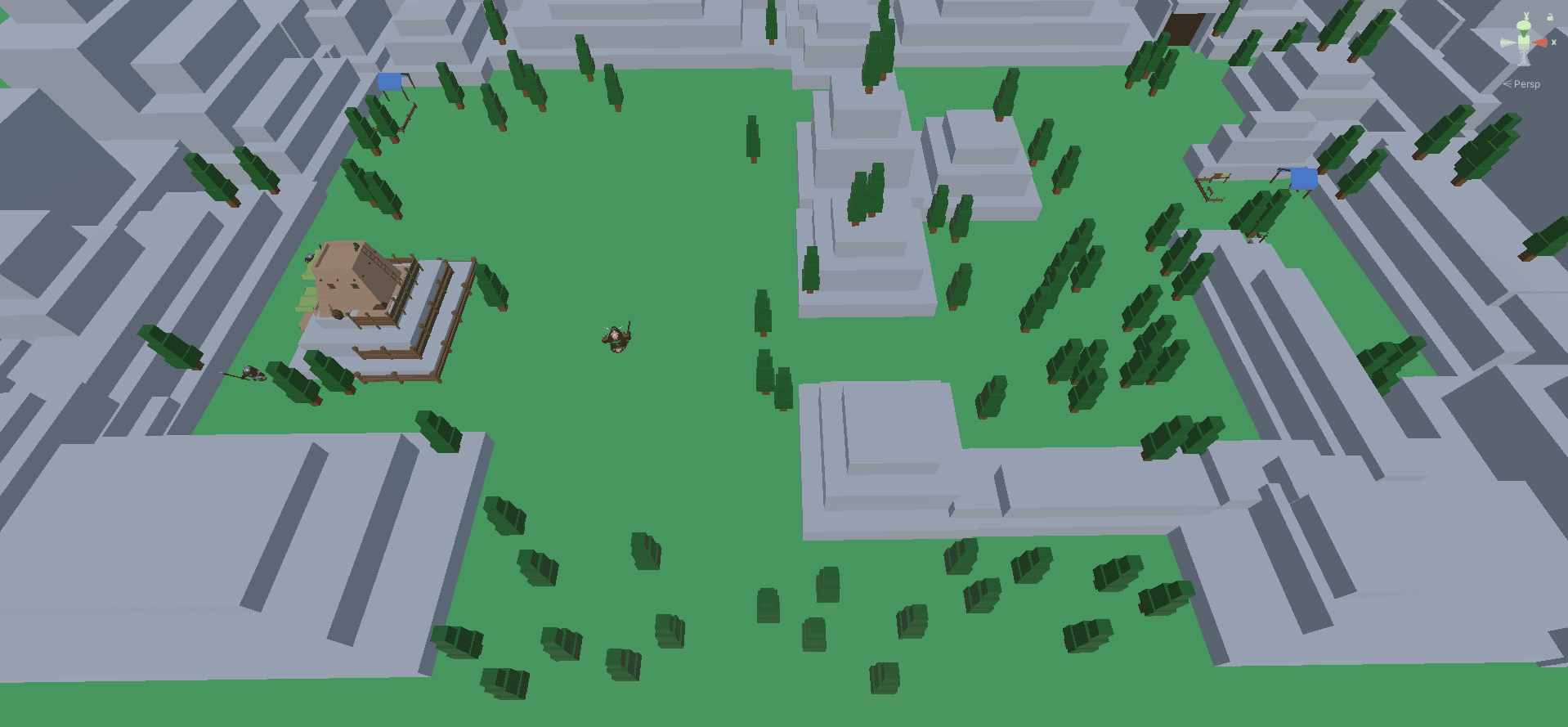PAG




Project Pages
Procedural Adventure Game (PAG) - Overview
First of all the game is not meant to be complete, it's my Testing playground to sperimenting new things in C# or game patterns. I did all the programming, Characters mobs and props are not made by me. How is the game done? In the game there are several systems addressed throughout the DBGA course. It's something I wanted to learn, and something else I experimented with.
My Work
Game Systems and Gameplay
- Procedural animations:I didn't want to use the animator in its entirety, its only function is to keep track of the animations to use. The rest is managed by a special class inside the AnimationManager.cs Also there is a small system of attack combos in the player and monsters. It didn't come out on top and I'll have to look into that further.
- State Machines:Experimenting with it was very interesting, unfortunately I only had time to implement a small version of what I wanted to do.
- Interfaces:helped me make the mobs state machines and They have also been very useful for interactive objects.
- Singletons: The managers of the game, single instance.
- AI : One of the things that fascinates me the most, I should have managed the movements of the mobs with the navmesh, but for now I'm leaving them stupid and clumsy because it's a topic I'll want to explore, like all things related to AI.
- Interactions: created an object of type "IInteractable" every class that will implement the IInteractable interface will be interactable. Like the PlayerSpawn object
- Dungeon system: This is the thing I'm most PROUD of about this project! I figured it out myself, and managed to do what I intended to do. Surely there will be ways to improve and optimize it in the future, but basically you can create infinite rooms (DON'T or PC-BOOM).
- Object Pooling: Not optimized yet, but there is a small vague example in the mob spawner.
Procedural Dungeon
The dungeon system is Hierarchical meas that Dungeon > Rooms > Tiles > Walls > Torches.
There is also a chunk system for the rooms, the only active rooms are the ones near the player's current room. (Exception for the starting room wich is always active).
Pathfinding
A simple A* Alghoritm, i'm creating a grid with determines some of the properties of the nodes to try to make it more "generic pourpose", not usable only in the dungeon, the optimal situation in this case would be: Each tile of the dungeon is a node in the alghoritm. I did this way cause i want to reuse this assets/script in others scenes besides the procedural dungeon. Note: this is not optimized and there are some mistake. I'll leave them for learning (how-not-to-do) purpouses.
Media
Click/Tap To zoom-In/Out

.png)
.png)
.png)











